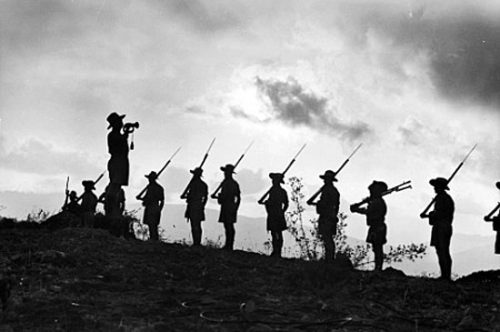
All Hallow’s Eve, modernly known as Halloween, is a festival that marks a time of death and dying in the yearly cycle. In some rituals, the dead are invited to partake in the celebrations, either through being summoned by music or remembered in prayer. Commonly, stories are told about people who have passed. All of this makes sense on the Northern Hemisphere calendar, but not so much in New Zealand.
The purpose of the Halloween festival, befitting the harvest, is to remember the dead. This is fitting because it occurs at the end of October, which is near the end of autumn in the Northern Hemisphere, where the leaves have fallen dead from the trees and the nights are quickly becoming longer, colder and darker.
This is why it is associated with graveyards and skeletons and cobwebs and spiders and mummies, and any other symbol of death that one can think of. At the end of October in the Northern Hemisphere it’s closer to the midwinter to come than it is to the midsummer gone, and is only getting darker and colder, which naturally feels like death for those experiencing it.
What is understood by few, in New Zealand at least, is that the old festival schedule represents a deep natural understanding of the connections between the physical and the metaphysical world. Celebrating Halloween near the end of autumn when Nature is dying is the kind of tradition that deepens the connections of people to the natural world and gives their lives meaning.
This means that we in New Zealand shouldn’t celebrate Halloween on the 31st of October, when it’s light until almost 9p.m. and is sometimes as warm as summer (if the winds are blowing from the North or from Australia). Seven weeks before the summer solstice is a time when we should be conducting a fire festival to celebrate the return of light and warmth into the world at the apogee of the yearly solar cycle.
New Zealand already celebrates these natural traditions at the correct time in the yearly solar cycle in the form of ANZAC Day and Guy Fawkes’s Day.
ANZAC Day has become a de facto national festival with an emphasis on the remembrance of the dead and a dawn ceremony – exactly as Halloween was practiced at the end of autumn in old times. On this day we listen to a bugle call that is the same as that our ancestors would have heard a century ago, and we stand in silence to make it as evocative as possible, which symbolically summons those ancestors to stand by our side once again.
Seeing the world as a Great Fractal, this is analogous to how people like us celebrate Halloween in the Northern Hemisphere. It’s also around this day – April 25th – that the trees are either bare or yellow and red as Nature falls into the peak yin part of the cycle.
Guy Fawkes, while not a national holiday, nevertheless involves a public display of fire in a very similar fashion to Beltane in the Northern Hemisphere, or the bonfires of Walborgafton in Uppsala and Walpurgisnacht in Northern Europe. The purpose of the fireworks and bonfires in either case is to celebrate how the Sun itself will soon be lighting up the night as it approaches the zenith of its yearly cycle.
In other words, ANZAC Day and Guy Fawkes’s Day have become the Southern Hemisphere equivalents of Samhain/Halloween and Beltane/Walpurgisnacht respectively. These festivals occur at almost exactly the same times of the seasonal cycle, and feature the same themes of death and fire respectively, but if a person in the Southern Hemisphere was primarily following the calendar they could easily fail to notice this.

“The purpose of the fireworks and bonfires in either case is to celebrate how the Sun itself will soon be lighting up the night as it approaches the zenith of its yearly cycle.”
Sorry if I’m misreading you but Guy Fawkes has nothing to do with anything other than what’s known as the gunpowder plot of 1605.
“The tradition of Guy Fawkes-related bonfires actually began the very same year as the failed coup. The Plot was foiled in the night between the 4th and 5th of November 1605. Already on the 5th, agitated Londoners who knew little more than that their King had been saved, joyfully lit bonfires in thanksgiving. As years progressed, however, the ritual became more elaborate.”
http://www.bonfirenight.net/bonfire.php